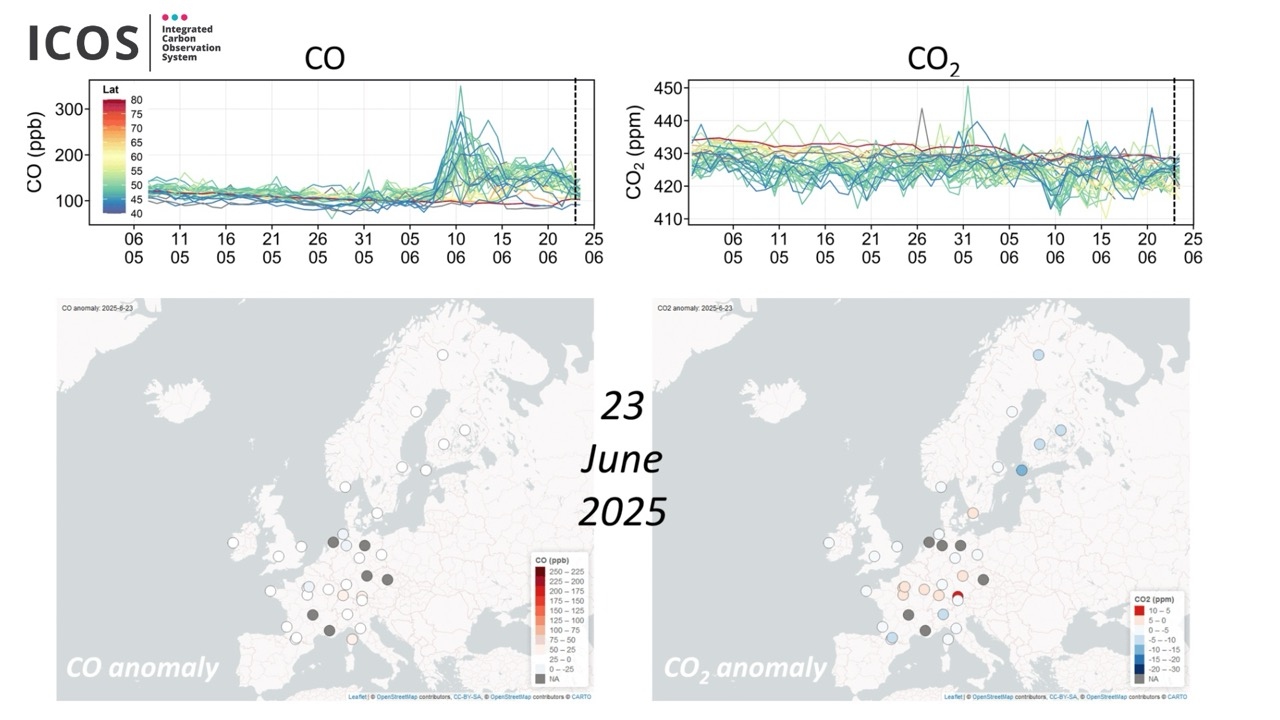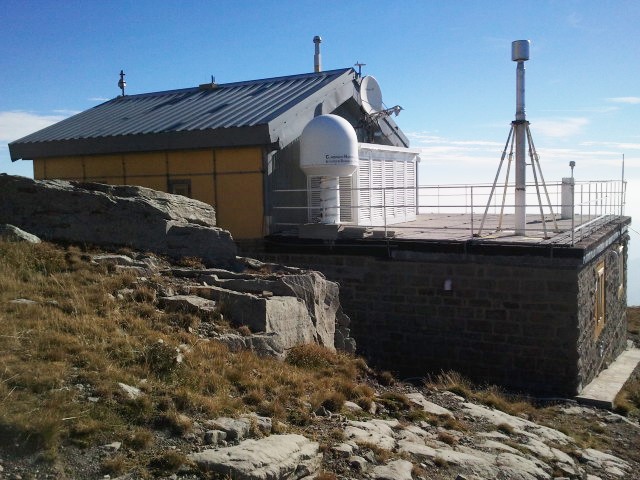
Since mid May and through June, wildfires have been raging in Canada and the USA. The plumes caused by the fires have now reached Europe, as observed by ICOS Atmosphere stations spanning from South Europe to Scandinavia.
From 8 June 2025, with a peak on 10 June, ICOS Atmosphere stations detected the presence of smoke plumes from the North American wildfires, indicated by a sharp increase, up to 200 ppb, in carbon monoxide (CO). The smoke plumes were detected by ICOS stations spanning from the Mediterranean region to the southern Scandinavia.
Although higher levels of carbon dioxide (CO₂) are typically expected in a smoke plume, measurements instead showed an overall decrease of CO₂, up to 20 ppm.
“Interestingly, CO₂ shows a negative anomaly: air masses have also flown over areas active in photosynthetic carbon uptake, offsetting the CO₂ emissions caused by fires,” explains Dr Michel Ramonet, Researcher at the ICOS Atmosphere Thematic Centre.
Strong photosynthesis during the summer months appears to have helped reduce the negative impacts of fires. This has previously been a observed by Dr Paolo Cristofanelli, Principal Investigator of the Monte Cimone Atmosphere station in Italy, when studying the influence of wildfire emissions to carbon dioxide observed at the Mt. Cimone station.
“A significant increase in CO₂ is observed at Mt. Cimone typically between October and April, when air masses influenced by wildfire emissions from Europe reach the measurement site. This CO₂ signal is much less pronounced between May and September. Although further investigation is needed, we suggest that the ability of vegetation to act as a sink for atmospheric CO₂ may partially offset wildfire emissions during the transport of air masses toward the observation site", Paolo Cristofanelli says.

Photosynthesis cannot, however, be regarded as a reliable offset for wildfire emissions. Previous research has shown that droughts and extreme heat can reduce or even halt photosynthetic activity in vegetation, preventing them from absorbing carbon from the atmosphere. The capacity of the European carbon sink is closely observed by ICOS stations.
“Thanks to the uniquely dense network of stations and the ability to provide measurements within 24 hours, the ICOS atmospheric network can measure the regional impacts of all kinds of events ranging from fires, droughts or even gas pipe leaks”, Michel Ramonet says.
Read more:
- Cristofanelli, P., Trisolino, P., Calzolari, F., Busetto, M., Calidonna, C. R., Amendola, S., ... & Putero, D. (2024). Influence of wildfire emissions to carbon dioxide (CO2) observed at the Mt. Cimone station (Italy, 2165 m asl): A multi-year investigation. Atmospheric Environment, 330, 120577. https://www.sciencedirect.com/science/article/pii/S1352231024002528
- Harris, S. J., Schwietzke, S., France, J. L., Velandia Salinas, N., Meixus Fernandez, T., Randles, C., ... & Zhang, Y. (2025). Methane emissions from the Nord Stream subsea pipeline leaks. Nature, 1-7. https://www.nature.com/articles/s41586-024-08396-8
- Ramonet, M., Ciais, P., Apadula, F., Bartyzel, J., Bastos, A., Bergamaschi, P., ... & Yver Kwok, C. (2020). The fingerprint of the summer 2018 drought in Europe on ground-based atmospheric CO2 measurements. Philosophical Transactions of the Royal Society B, 375(1810), 20190513. https://royalsocietypublishing.org/doi/10.1098/rstb.2019.0513